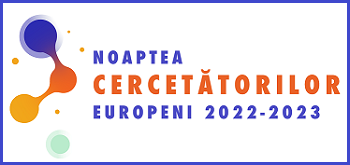| Articolul precedent |
| Articolul urmator |
 |
 352 352 11 11 |
| Ultima descărcare din IBN: 2024-03-14 21:56 |
| Căutarea după subiecte similare conform CZU |
| 784.4.04:398.8 (1) |
| Muzică vocală (287) |
| Folclor propriu-zis (721) |
 SM ISO690:2012 SM ISO690:2012TCACENCO, Victoria. Moldovan popular music under the influence of national folklore: diachronic and synchronic aspects. In: Patrimoniul cultural: cercetare, valorificare, promovare, Ed. 14, 30-31 mai 2022, Chișinău. Chișinău: Institutul Patrimoniului Cultural, 2022, Ediția 14, p. 33. ISBN 978-9975-84-158-0. |
| EXPORT metadate: Google Scholar Crossref CERIF DataCite Dublin Core |
| Patrimoniul cultural: cercetare, valorificare, promovare Ediția 14, 2022 |
||||||
|
Conferința "Patrimoniul cultural: cercetare, valorificare, promovare" 14, Chișinău, Moldova, 30-31 mai 2022 | ||||||
|
||||||
| CZU: 784.4.04:398.8 | ||||||
| Pag. 33-33 | ||||||
|
||||||
| Rezumat | ||||||
The aim of the article is to reveal one of the strongest trends in popular music of the Republic of Moldova which embraces pop-music, rock-music, jazz, rap and other phenomena. The author made an attempt to analyze the important aspect of Moldovan popular music – the influence of folklore upon popular music, examined both diachronically and synchronically. The chronological period covered represents the last 50 years starting with the end of the 1970s and finishing with the beginning of the 2020s. Several art groups were selected as material for analyses: the famous VIA (vocal-instrumental ensemble) of the Soviet epoch named “Orizont” (the video recording of songs and instrumental compositions “La morișca” and “Молдавские напевы” made in 1977 are analyzed), the popular Moldovan rock group named “Zdob-și-Zdub” whose song and video clip “Hăitura” created in 1999 assimilated different genre and style peculiarities of Moldovan folk culture. The third representative of the national popular music is the ethno-jazz group “Țrigon” (one of the compositions created in 2021 named “Brâu” is selected). Based on the analyzes of the above mentioned musical examples, the following conclusions are formulated: the folklore idioms, genre and style features, ornamentation, and other elements penetrate all the levels of analyzed music compositions; besides this influence covers some elements of a syncretic-synthetic artistic product (e.g. verbal text, video images etc.); the studied examples demonstrate that Moldovan popular music reveals an exceptional adherence to the principles of “glocalization”: the musical genres and forms of foreign (Western) origin are assimilated maintaining the national identity and unique character based on the music psychology of Moldovan people. |
||||||
|












